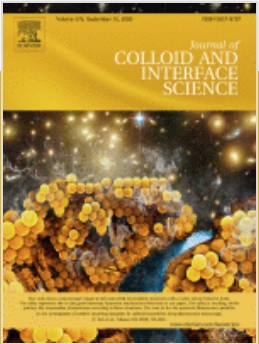Hypothesis
Hydrogels of N-isopropylacrylamide and methacrylic acid (P(NIPAm-co-MAA)) display pH sensitivity and complex positively charged molecules through carboxylate groups, while having a critical solution temperature at which they reduce in volume and dehydrate. We aimed to elucidate how the responsiveness of MAA to environmental changes alters PNIPAm hydrogels at the molecular level using nuclear magnetic resonance (NMR). Time-lapse NMR allows us to follow the evolution of NMR signal under a temperature stimulus, providing unique information on conformational freedom of the hydrogel polymers.
Experiments
We used time-lapse NMR to follow the evolution of the NMR signal with time over a temperature change from 25 to 40 °C and to study the swelling/deswelling kinetics of P(NIPAm-co-MAA) microgels at different pH values and ionic strengths, and in the presence of positively charged molecules complexing carboxylate groups.
Findings
At acid pH, hydrogel collapse is favored over neutral pH, and at basic pH the carboxylates remain steadily hydrated during temperature increase. Increasing ionic strength results in a faster, more effective collapse than decreasing pH. Complexation of medium-sized molecules with several charges (spermine, spermidine) causes a faster collapse than complexation with large molecular weight poly(allylamine) hydrochloride, but similar to the collapse effected by large poly(diallyldimethylammonium) chloride. This work opens new perspectives to using time-lapse NMR to study thermoresponsive systems that respond to multiple stimuli, with particular relevance in designing hydrogels for drug delivery.

